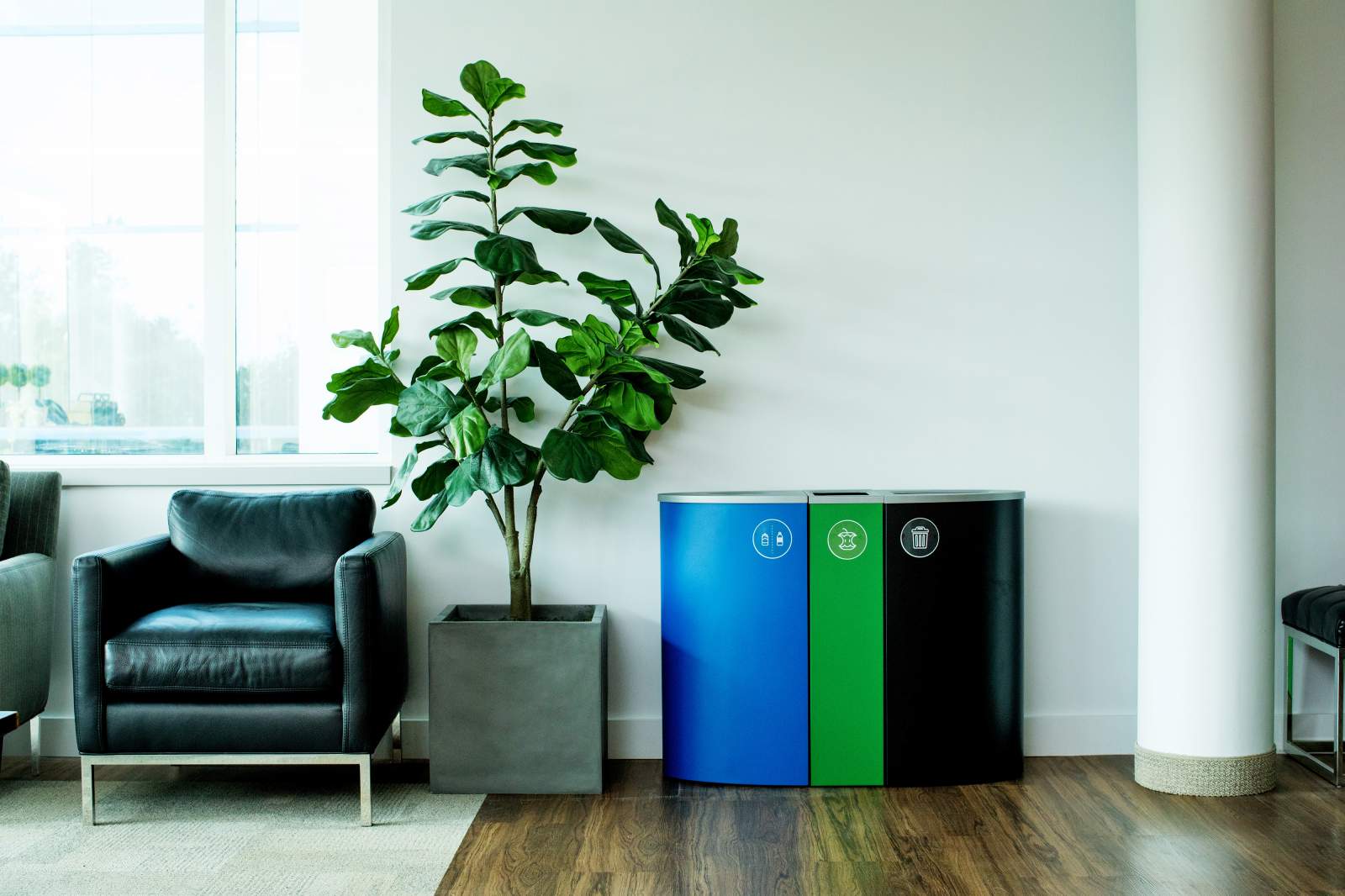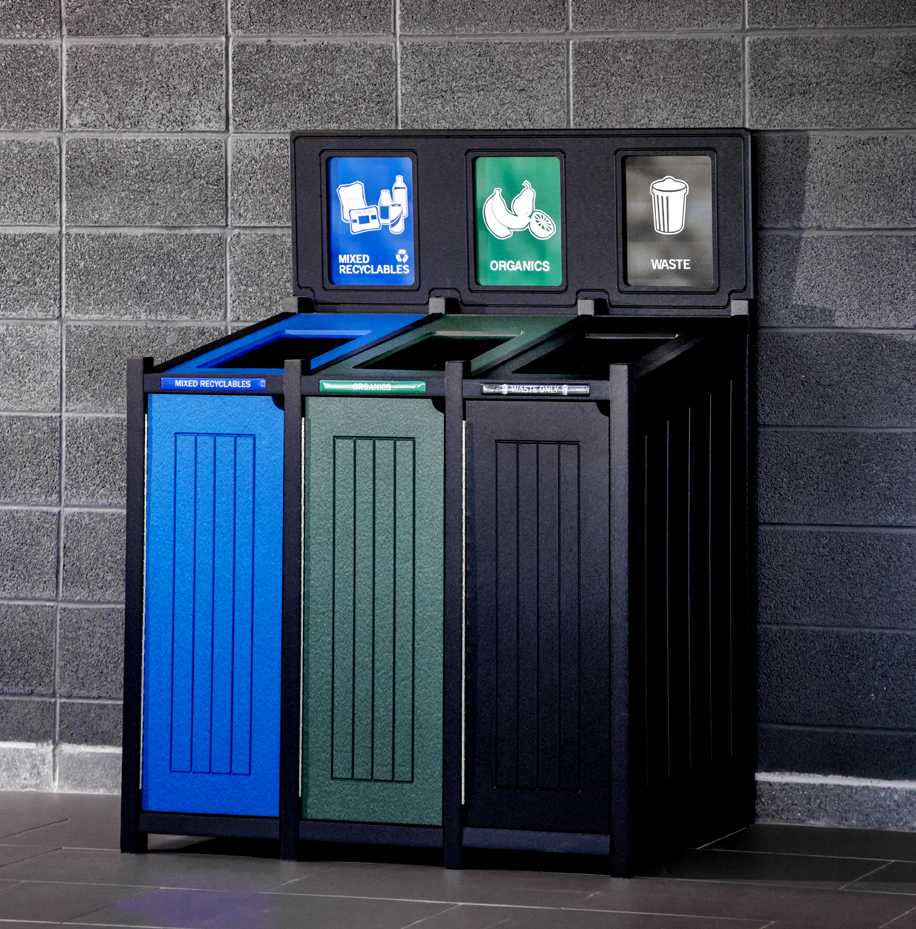It's time to redefine your waste diversion program by selecting the perfect containers for your organization's needs!

Recycling industry secrets: What you need to know when choosing recycling bins
Mikayla Richards | March 16th, 2020
Choosing the right recycling bins is crucial because it can help shape your recycling and waste program by reducing waste, improving diversion rates and eliminating contamination. So how do you approach this investment? The number of factors that impact the selection of bins seems to be increasing daily from stakeholder preferences to fire regulations, but don’t stress, Busch Systems® has got you covered with everything you need to consider before purchasing your bins!
Busch Systems' 35 years of experience puts us in a unique position to share some obvious and not so obvious factors that need to be considered when choosing recycling containers. For example, you might not think about how a hinge or a non-hinge lid can affect your custodial team and servicing times. Some other areas we will focus on are bin purpose, placement, custodial preferences, and bin deployment.
Purpose & Placement
Before bins are purchased, it's important to have a general idea of the purpose and the future location of the bins. Consider if they are for indoor or outdoor use, going to be placed in a hallway or meeting room and if there are any other adjacent objects which may impact the bins you select. When deciding the location of these bins, it's necessary to think about the number of people using the bins and how convenient the bins are for people to use. According to a study by the University of British Columbia, placing recycling and compost containers in more convenient locations can increase recycling rates. They found that “bins 1.5 meters away from suite doors drastically boost recycling and compost rates by 141 percent.” (University of British Columbia, 2017) This study took place at a multi-family apartment and recycling rates improved because placing the bins outside of apartment suites made it more convenient to recycle. This placement meant tenants did not have to go out of their way to garbage disposal areas or different floors to recycle or compost, therefore they were more likely to use the recycling and compost program. Determining the perfect location will ensure your investment in containers is worthwhile!
The next point to consider is the atmosphere of a particular room or location and if the desired bin(s) will fit with it. Containers that are best suited for cafeterias or lunchrooms might not be the same look wanted for the CEO’s office. Preferred characteristics for a lunchroom container are large volume, clear signage and something that can be easily serviced and cleaned. Whereas for the CEO’s office, the focus would be ensuring the bin matches the feel of the space while still functioning as an effective recycling and waste container.
Custodial Servicing
Your custodial team interacts with the bins the most out of all the stakeholders involved, therefore, their input is valuable and will provide insights you may never think of. We recommend sitting down with your custodial staff to pick their brains, and we'll provide a few industry secrets to get you started. Bin design can impact how easy it is to service the bins. Bags are typically either placed on bag clips or stretched over the liners or the edge of the container. The space between the bins and liners can impact the ease of placement and removal of the bags. Choosing receptacles that have liners with handles or a larger space between the liner and container can reduce servicing times and save money. Your custodial team can also provide insight into the capacity of bins required for each location. If they are servicing the bins multiple times a day, it could be a sign that it is time to increase your bin capacity! Information like this is unique to your organization and chatting with your custodial team is the perfect way to learn about them.
Fire Restrictions
Fire restrictions will vary depending on the country, state/province, and industry. Here are some common regulations:
- Containers that hold combustible materials (i.e. oily rags) must meet the following regulations:
- Must be manufactured out of noncombustible materials with a close-fitting lid that is self-closing
- If the floor below the container is flammable the container is required to have a flanged bottom or legs that 50mm or greater in length
- Containers with combustible materials must be emptied daily
These are good starting points, but we always recommend checking your local fire regulations because as mentioned these vary depending on location and industry. For example, for Day Care Centers in Ontario, Canada, all recycling and waste receptacles must be made of noncombustible materials, whereas in other industries noncombustible containers are only required when the containers are holding flammable materials.
Bin Deployment
Bin deployment is not typically the first thought that comes to customers’ minds when choosing bins, it's usually an afterthought. However, bin deployment is just as important as choosing the right bin. Many factors determine the perfect bin deployment strategy. These factors can include the number of bins purchased as well as bin size, weight and if an assembly is required. An organization’s layout also affects bin deployment. Factors like size, number of buildings, number of floors and if there is elevator access all need to be considered. Another determinant that affects bin deployment is the resources accessible to the organization, including the number of people available and their skill set, along with physical resources like pushcarts and trucks. The answers to these factors will help determine which strategy is optimal for deploying your bins. A small number of bins that are lightweight with minimal assembly may be something your maintenance team can easily deploy. A situation with hundreds of bins over multiple floors or buildings might require additional labor or an outside service. Though bin deployment is the last step in purchasing a bin, it should not be last on your mind because it impacts how soon your bins are in use and can impact your recycling program.
With these tips and tricks, you will be selecting the right bin in no time! If you are interested in learning more things that need to be considered before purchasing bins, check out our webinar which dives deeper into the topics discussed here as well as bin design and hauler considerations. If you have any questions about an article or feel that you need a hand in choosing the perfect bin for your organization, feel free to reach out to our consulting team at diversion@buschsystems.com for a complimentary quote!



















